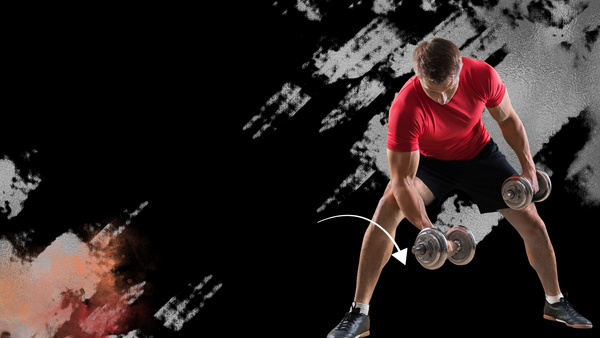Best Abdominal Workouts for a Strong Core at Home
Transform your core with effective abdominal workouts you can do at home. Get a stronger, more defined midsection with our expert-approved exercises - no equipment needed.

https://www.youtube.com/watch?v=Dl8N_8UtWUU
Did you know that nearly 80% of adults experience lower back pain? This is often due to weak core muscles. Strong abdominal workouts can help transform your body stability and prevent injuries.
Core exercises are more than just getting six-pack abs. They build functional strength that supports your whole body. Your core muscles, including abs, back, and pelvic stabilizers, are key for everyday movements. They help with lifting groceries and keeping your posture right.
Building a strong core doesn't need expensive gym equipment. With the right core exercises you can do at home, anyone can boost their abs training and fitness.
Key Takeaways
- Core muscles are essential for overall body stability
- Home workouts can effectively strengthen core muscles
- Consistent training improves posture and reduces injury risk
- No expensive equipment needed for effective abs training
- Core strength benefits daily physical activities
Understanding Your Core Muscles and Their Functions
The human body's core is made up of many muscles. These muscles are key for stability, movement, and physical performance. Knowing about these muscles helps you get effective strategies for six-pack abs and strong core.
Your core muscles work all the time to keep your body stable. Studies show that weak core muscles can raise injury risk by up to 40%. So, it's important to train them well for fitness and to avoid injuries.
Rectus Abdominis (Six-Pack Muscles)
The rectus abdominis is the muscle everyone wants for six-pack abs. It's at the front of your belly and helps bend your spine. Engaging these muscles requires specific oblique workouts that challenge your whole core.
- Primary function: Spine flexion
- Visible when body fat percentage is low
- Critical for belly fat burning exercises
Transverse Abdominis (Deep Core)
The transverse abdominis is like a natural weight belt. It's the deepest abdominal muscle and gives core stability. It also helps keep your organs safe. Strengthening it can lower incontinence risk by up to 25%.
External and Internal Obliques
The obliques are on your sides and are key for twisting and bending. Athletes, like baseball players, need strong obliques for quick twists. Training these muscles makes your core stronger and less injury-prone.
By training these muscle groups, you can build a stronger, more stable core. This supports your overall fitness and lowers injury risks.
Essential Equipment and Space Requirements for Home Training
You don't need a lot of space or expensive gear to work out at home. Most exercises can be done in a small area with just a few pieces of equipment. A carpeted floor or exercise mat is perfect for starting your waist slimming routines.
Here are the main tools you'll need for home core training:
- Resistance bands for versatile strength training
- Ab roller for targeted core muscle engagement
- Stability ball for enhanced balance and core work
- Lightweight floor mat
Look for home workout gear that's both compact and versatile. The REP Fitness Ab Roller is a great choice. It costs $14.99 and weighs just 1 lb. It can handle up to 300 lbs, making it good for all fitness levels.
Pro tip: You don't need a huge home gym to get a strong core. Choosing the right equipment and using your space wisely can turn any small area into a great workout spot.
Options like resistance bands and portable tools are affordable and effective. They let you work out well without taking up too much room. The goal is to find gear that can be used in many different ways.
Beginner-Friendly Abdominal Workouts
Starting a core strengthening journey means learning basic exercises. These exercises are safe and effective. For newbies, plank exercises and crunch variations are key to a strong core.
Core training boosts body strength and stability. Beginners can start with simple yet powerful movements. These movements help build muscle endurance and control.
Basic Core Strengthening Exercises
Good core workouts begin with basic movements. These exercises target many muscle groups. Here are some exercises for beginners:
- Forearm Plank: Hold for 30-60 seconds
- Modified Bicycle Crunches: Alternate for 30 seconds
- Bird Dog: 10 repetitions per side
- Seated Leg Lifts: Raise 3-5 inches off the floor
Proper Form and Breathing Techniques
Learning crunch variations means focusing on breathing and body alignment. Inhale during relaxation and exhale during muscle contraction. This helps engage the core and avoid strain.
Progressive Training Methods
| Exercise | Beginner Duration | Advanced Progression |
|---|---|---|
| Plank Exercises | 30 seconds | 60-90 seconds |
| Side Planks | 15-20 seconds | 45-60 seconds |
| Bicycle Crunches | 10-15 repetitions | 30-45 repetitions |
Increasing the difficulty of exercises helps muscles grow. But, do it slowly to avoid injuries. Always listen to your body and progress at a pace that feels right.
Advanced Core-Strengthening Variations
Once you've got the basics down, it's time to step up your game. Advanced core exercises need more strength, control, and precision. They target deeper muscles for better core strength.
Getting better at core exercises means using smart strategies. About 80% of people can see their abs with the right training. These advanced moves work more muscles than simple exercises.
- Hanging Leg Raises: Targets lower abs with increased difficulty
- Weighted Russian Twists: Enhances rotational core strength
- Cable Crunches: Provides resistance for deeper muscle activation
Core training should work on stability, anti-rotation, and rotational power. Advanced users can try complex moves like the Turkish get-up. It boosts stability, mobility, and strength.
Always keep safety in mind with intense abs training. Make sure to use the right form, progress slowly, and listen to your body. Good core workouts can be done in just 6 minutes with quality exercises.
Don't forget, what you eat matters too. A diet with 40% protein and 40% carbs helps build your core.
Conclusion
Building a strong core is more than just looking good. It takes careful planning and regular practice. Men should aim for 10-12% body fat, and women for 14-18% to see defined abs. Core exercises improve fitness and strength, not just looks.
Learning to do core exercises well means knowing how to activate muscles and use the right techniques. Studies show that mixing up your workouts can really help. This includes everything from basic moves to exercises that challenge your balance.
But it's not all about the exercises. What you eat and how often you work out matter too. Try to do core exercises 1-3 times a week. Focus on doing them right and getting better slowly. This way, you'll not only get stronger abs but a healthier, more capable body.
Begin your journey to a stronger core today. With each exercise, you're one step closer to achieving your fitness goals.
FAQ
How often should I do abdominal workouts?
Aim to do ab exercises 3-4 times a week for best results. Make sure to rest at least one day between workouts. This helps your muscles recover and prevents overtraining.
Being consistent is key to improving your core strength and muscle definition.
Can I get a six-pack by doing only abdominal exercises?
No, getting visible abs needs more than just core exercises. You also need strength training and a balanced diet. Losing body fat is key to seeing muscle definition.
Core workouts build muscle strength, but diet is just as important for a lean midsection.
Do I need special equipment to start core training?
You don't need special equipment to start. Bodyweight exercises like planks and crunches are great for beginners. As you get better, you can add equipment like resistance bands and stability balls.
How long does it take to see results from core workouts?
Results usually show in 8-12 weeks, depending on your diet and fitness level. You might see improvements in core strength in 4-6 weeks with regular training.
Are core workouts safe for everyone?
Core exercises are safe for most people. But, if you have back issues or chronic conditions, talk to a doctor first. Always start slow, focus on form, and progress carefully to avoid injury.
What's the difference between core strength and six-pack abs?
Core strength is about the stability and strength of muscles around your spine and pelvis. It's important for movement and injury prevention. Six-pack abs are about low body fat and muscle definition. Core strength is functional, while six-pack abs are more about looks.
Can I do ab workouts every day?
No, it's not good to work the same muscles every day. Core muscles need time to recover. Aim for 3-4 core workouts a week with rest days in between. This helps prevent overuse injuries and lets muscles grow stronger.
How important is breathing during core exercises?
Breathing is very important during core exercises. It helps keep your core stable, maintain form, and engage muscles better. Exhale when you're working hard, like when contracting your abs. Inhale when it's easier.
👉 Join the Active Man Community
Get expert tips, workout guides, nutrition hacks, and the latest trends delivered straight to your inbox every week. No spam — just actionable insights to help you live stronger, healthier, and better.





